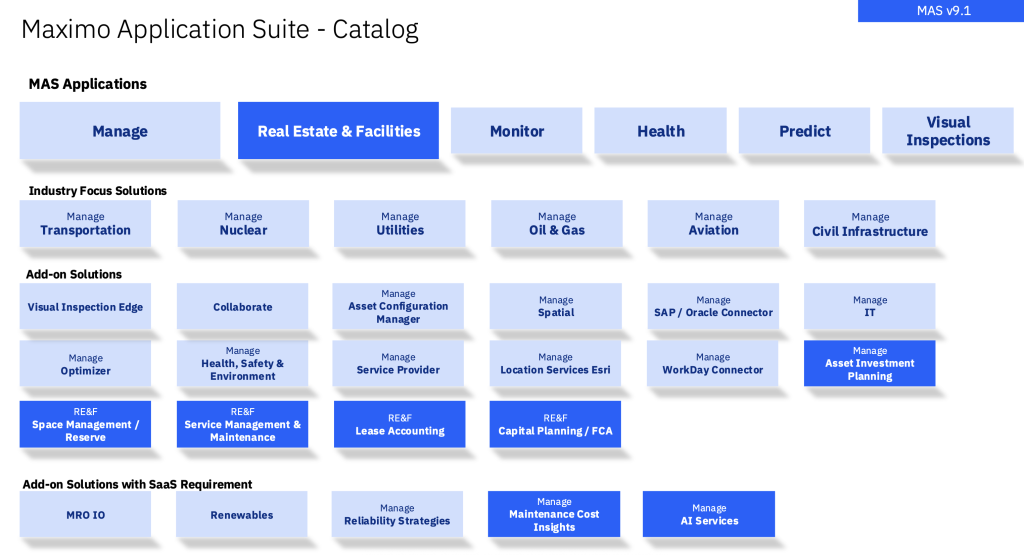Maximo Application Suite – Trick or Treat?
Ray Miciek, EVP Strategic Partnerships
A couple of years ago, I published a blog with the title Maximo Application Suite – Trick or Treat. With Halloween right around the corner, I thought it seemed to make sense to revisit and make a slight update to the content. Spoiler alert – based on market response, the Maximo Application Suite is certainly considered a necessary “treat” for those companies that are truly looking to take their company’s asset management strategy to the next level.
During the month of October, I cannot help but think wistfully of what used to be one of the best days of the year for a kid – Halloween of course! Do you remember progressing through the trick or treat lifecycle?
Regardless of what age you were, what was the first thing you did when you got home? You poured out the bag and took inventory of that candy stash. You quickly divided your stash into various categories and sub-categories – prioritizing which to eat first, which to save for later, to trade, etc. Maybe it was Chocolates, Hard Candy (Jolly Ranchers), soft candy (tootsie rolls, candy corn), or bubble gum (remember biting into that rock hard Bazooka piece?). There was also the “throw-away” category – popcorn balls, orange circus peanuts, those nameless black/orange wrapped candy pieces and toothbrushes. From there, you could plan your trades with your friends and plan your consumption cycles.
The Maximo Application Suite candy bag
What does this have to do with the IBM Maximo Application Suite? It’s the same kind of thing. Let’s pour out the Maximo candy sack and see what’s what. We won’t go too deep here, as there is really a lot to review and you’ll find links to additional resources at the end.
First thing to know is that Maximo, as many of us know it today, is a component of the Maximo Application Suite – known as Manage. The functionality and operations are relatively unchanged from 7.6.1.2. The newest enhancements in 8.6 provide some nifty things like maintenance cost rollup from within the application and some navigational changes. Version 9.1 brings an updated look, with things like operational dashboards and brand new capabilities to extend how you manage assets – including AI.
About the applications
When you start sorting through the Maximo candy bag – what you will find is several other applications and add-ons available alongside Manage:
- Monitor
- Health
- Predict
- Visual Inspection
- Real Estate and Facilities (MREF – formerly TRIRIGA)
Each of those applications have a host of capabilities that can be run whether you use Maximo (Manage) or not. Under Manage, you have the usual Industry solutions like Nuclear, Utilities, Oil and Gas, Aviation, Civil Infrastructure, and Transportation. Maximo Mobile is included as part of Manage, and Manage also includes add-ons like Anywhere, Spatial and Linear. Mobile as continually been improved and is gaining widespread adoption. Many customers are leveraging Mobile’s increased capabilities within the Inspection Form functionality.
You can access all of these solutions and add-ons within the Maximo Application Suite. They’re all in the same “candy bag” that you can opt to use (or not). Then you can get some additional add-ons that are separate parts but work with the Suite like, Renewables, Maximo Inventory Optimization, Maintenance Cost Insights and Vegetation Management. Consider them candy from your sibling’s bag that you can choose to trade or take if you want to. The full list of offerings gives a clearer picture:

One of the most exciting features is the incorporation of AI being infused into various parts of the suite that can quickly increase the ability to drive real value and efficiencies in your operations – just like your candy, it offers a variety of flavors to fit your particular use case.
How the Maximo Application Suite licensing works
IBM is encouraging a subscription model, where software and support is wrapped into an annual fee. This should lower a customer’s initial investment on software – though perpetual licenses will still be available. IBM also offers a concurrent usage model. This model assigns a point value to a type of user and an application or add-on solution accessed. As a user logs in, he/she consumes points, reducing the number of points available to others. But when that person logs out, those points return to the pool for someone else to use. You eat your Snickers bar, but when you go to bed, magically a new one is put back in your bag! IBM’s point server will manage all of this for you.
But wait, there is more! Maybe there are some users who always need access – the more familiar-named user model. IBM ensures that is still available by offering it in Maximo Application Suite. Good news is that you can mix and match. In addition, there is a dashboard that helps you monitor who is consuming your candy.
Each of the Maximo applications offer something that can add value to the right user. You can choose which to deploy and which to use later. But they’re always available to you on a common platform: the Maximo Application Suite.
IBM Maximo and Open Shift
And that brings us to the platform underpinning all of these offerings – IBM’s Open Shift. The platform has great potential to make the management and deployment of these different offerings much easier. You will hear the word “container.” We don’t have time to go into detail about containers but think of it as your “candy bag” Containers make it easier to manage and carry all that candy, a.k.a. applications and solutions within the Suite.
There is a lot to learn about the Maximo Application Suite. Talk to a trusted advisor, like Aquitas, or an IBM sales rep. Overall, we put Maximo in the “treat” category, with no “popcorn balls” to be found. Not everyone will necessarily need everything in the bag, but that’s the beauty of the Suite … you have access to all of your favorites!



